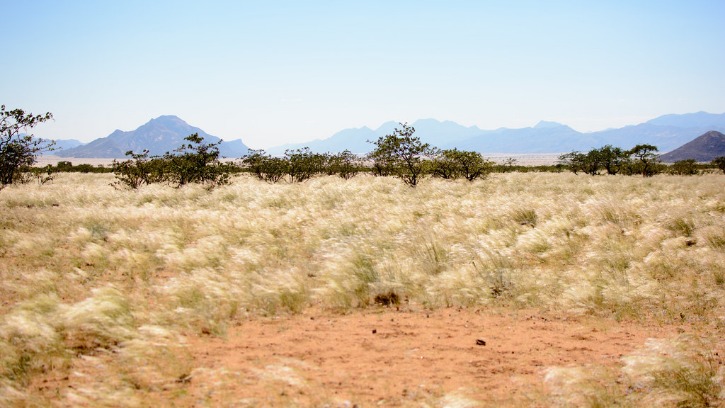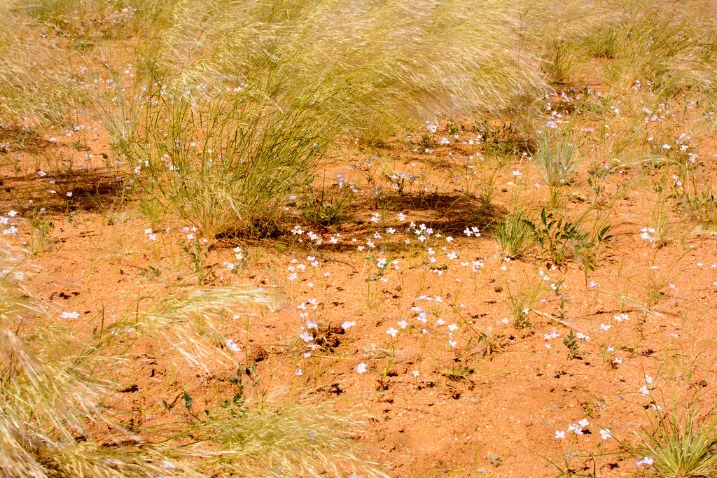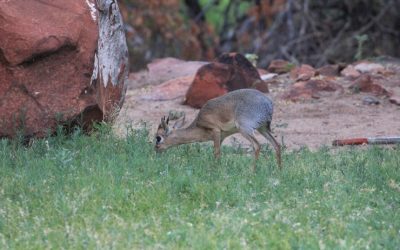Geography and Location of Fairy Circles
Fairy circles are mysterious, circular patches of bare soil surrounded by grass, predominantly found in the Namib Desert. These intriguing formations are primarily located in the central and southern regions of Namibia, where the arid climate and unique desert conditions create the perfect environment for their development. The geographic location of fairy circles in Namibia has sparked curiosity and scientific research for decades, aiming to uncover the natural processes behind these captivating natural phenomena.
Distribution within Namibia’s Desert
Fairy circles in Namibia are naturally occurring circular patches of barren land surrounded by vegetation, predominantly found within the Namib Desert. These intriguing circles are scattered across the arid landscape, creating a striking pattern in the desert’s terrain. The fairy circles are mostly concentrated in the Central and Koch area of the Namib Desert, particularly within the NamibRand Nature Reserve and other regions along the southern part of Namibia’s desert. Their distribution appears to be relatively dense in specific zones, with some estimates suggesting thousands of these formations span an area of several hundred square kilometers. The circles vary in size, typically ranging from a few meters to about 15 meters in diameter, and are often arranged in irregular, yet sometimes patterned clusters that contribute to the desert’s unique landscape. Due to their limited geographical range, fairy circles are regarded as a distinctive feature of the Namibian desert ecosystem, attracting scientific interest and tourism alike.
Geological Features of the Area
Fairy circles in Namibia are fascinating geological features characterized by circular patches of barren land surrounded by vegetation, primarily found in the Namib Desert. These unique formations are scattered across the Namibian surface, creating a striking landscape that has puzzled scientists for decades. The circles vary in size, typically ranging from a few meters to over 10 meters in diameter, and exhibit surprisingly uniform shapes that stand out against the surrounding greenery.
The area hosting the fairy circles features an arid desert climate with extremely low rainfall, high temperatures, and strong winds contributing to the region’s distinctive landscape. Underlying the surface, the geological composition includes desert sands, gravel plains, and gravelly soils, which influence the formation of these circles. The terrain is generally flat, with some portions featuring subtle undulations and rocky outcrops, emphasizing the harsh yet intriguing environment where these enigmatic circles occur.
Climate Conditions Influencing Formation
Fairy circles in Namibia are mysterious circular patches of land characterized by bare, grassless centers surrounded by lush vegetation. These formations are primarily found in the Namib Desert, particularly within the Central and Southern regions of the country. The terrain where fairy circles occur consists of sandy, arid desert plains that have been shaped by the unique geological and soil conditions of the area. The landscape is relatively flat with minimal elevation changes, providing an ideal environment for these intriguing patterns to develop.
The climate in Namibia’s fairy circle regions is arid and hyperarid, with extremely low annual rainfall often less than 50 millimeters. Temperatures can be intensely hot during the day, frequently exceeding 30°C (86°F), while nights can be considerably cooler. This harsh climate plays a significant role in the formation and maintenance of fairy circles, influencing the underlying biological and ecological processes that create these patterns. The scarcity of water limits plant growth, leading to the distinctive ringed patterns observed, which are believed to result from complex interactions between vegetation, soil, and environmental conditions.
Physical Characteristics of Fairy Circles
Fairy circles in Namibia are intriguing natural formations characterized by perfectly round, bare patches of land surrounded by lush vegetation. These distinctive circles range in size from a few centimeters to several meters in diameter and are mainly found in the arid grasslands of the Namib Desert. Their striking appearance and consistent shape make them a fascinating subject for scientists and visitors alike, highlighting the unique physical characteristics that define these mysterious natural features.
Size and Shape Variability
Fairy circles in Namibia exhibit a remarkable range of physical characteristics, with variability in size and shape that has intrigued researchers for decades. These circular patches of bare soil, surrounded by lush grass, tend to be relatively uniform in appearance but show significant diversity across different regions. Typically, fairy circles measure between 2 to 10 meters in diameter, though some can be larger or smaller depending on environmental conditions.
The shapes of these circles are predominantly round or nearly round, maintaining a consistent, symmetrical form that distinguishes them from other natural phenomena. However, some circles may display irregular or slightly elongated edges, reflecting local influences such as soil composition, water availability, or biological activity. This variability in size and shape contributes to the unique landscape of Namibia’s desert, making fairy circles a distinctive and fascinating natural feature.
Distribution Patterns and Density
Fairy circles in Namibia are remarkable natural formations characterized by their distinctive round shapes and uniform size. Typically ranging from about 2 to 10 meters in diameter, these bare patches are surrounded by lush grassland, creating a striking contrast. The soil within fairy circles often appears darker or differently textured compared to the surrounding vegetation, contributing to their unique visual appeal.
The distribution patterns of fairy circles in Namibia are primarily observed in the central and southwestern regions of the country, especially within the Namib Desert. They tend to appear in dense clusters or as isolated patches across expansive areas, following specific spatial arrangements that often seem regular or patterned. These formations can be found stretching over several square kilometers, with some regions exhibiting thousands of individual circles.
Density of fairy circles varies across different locations but typically remains high within the concentrated zones. There can be hundreds to thousands of circles per square kilometer, creating a surreal landscape that has fascinated scientists and visitors alike. The density and distribution patterns suggest that environmental factors such as water availability, soil type, and underground vegetation roots play significant roles in their formation and spatial arrangement.
Color and Vegetation Differences
Fairy circles in Namibia are distinctive underground formations characterized by circular patches of bare soil surrounded by vegetation, creating striking and uniform patterns across the landscape. These circles typically range from 2 to 10 meters in diameter and are notable for their well-defined edges that contrast sharply with the green grasses and shrubs growing around them. The bare soil within the circles appears lighter or tan-colored, setting them apart visually from the lush surrounding vegetation. Vegetation differences are prominent, as the circles are largely devoid of plant life, while the peripheries are densely covered with grasses, often varying in color from bright green to darker shades, depending on seasonal conditions. This stark visual contrast makes fairy circles a fascinating natural phenomenon, with their pure, circular shapes and distinct color variations contributing to their mystery and allure in Namibia’s desert landscape.
Formation Theories and Scientific Explanations
Formation theories and scientific explanations explore the mechanisms and processes behind natural phenomena, providing insights into their origins and development. In the context of Namibia’s iconic fairy circles, these theories aim to unravel the mysterious patterns of bare, circular patches that dot the landscape. Through scientific investigation, researchers seek to understand whether these formations are caused by ecological, biological, or geological factors, shedding light on the fascinating natural processes that create these intriguing land features.
Self-Organizing Ecosystem Hypothesis
The fairy circles of Namibia are mysterious circular patches of barren land surrounded by lush vegetation, primarily found in the Namib Desert. Several formation theories and scientific explanations have been proposed to understand their origin, with the Self-Organizing Ecosystem Hypothesis being one of the prominent ideas.
According to the Self-Organizing Ecosystem Hypothesis, fairy circles result from natural self-organizing processes within the vegetation and soil. This theory suggests that interactions between plants, water availability, and soil nutrients lead to the emergence of these distinct circular patterns without external disturbance.
Key points about this hypothesis include:
- It posits that plant competition for scarce water resources causes the surrounding vegetation to concentrate, leaving central bare patches.
- The process is driven by feedback mechanisms where dense vegetation increases water uptake, further inhibiting growth in the circle’s center.
- This self-organization stabilizes the pattern over time, maintaining the characteristic fairy circle shape.
- Other scientific explanations consider factors like termite activity, gas emissions, or soil chemistry, but the self-organizing model emphasizes natural ecosystem dynamics.
Vegetation Competition and Water Scarcity
Fairy circles in Namibia are enigmatic, circular patches of bare soil surrounded by vegetation, predominantly grasses. Their formation has fascinated scientists and researchers, leading to various theories and explanations rooted in ecology and environmental science. Formation theories suggest that these circles result from complex interactions between vegetation competition, water scarcity, and underground processes. One prominent hypothesis is that vegetation competition, driven by limited water availability, causes certain plants to dominate while others are excluded, creating the distinct circular patterns. Other theories propose that biological factors, such as termites or plant self-organization, contribute to their development, possibly influenced by water scarcity which limits plant growth and sets the stage for self-organizing ecosystems. Understanding the balance between water resources and plant interactions is crucial to unraveling the mystery behind these unusual landscape features observed vividly across Namibia’s arid regions.
Role of Termites in Circle Formation
Fairy circles in Namibia are intriguing phenomena characterized by circular patches of barren land surrounded by grass, captivating scientists and visitors alike. Formation theories suggest that these circles result from complex ecological interactions, including processes like plant competition, termite activity, and soil chemistry. Scientific explanations often highlight the role of termites, which are believed to influence the formation and maintenance of fairy circles through their burrowing and soil manipulation behaviors. Termites may deplete underground nutrients in specific areas, inhibiting plant growth and leading to the distinctive circular patterns. These insect activities, combined with climatic factors and plant competition, contribute to the dynamic and self-organizing nature of fairy circles, making them a fascinating subject of ongoing research in ecology and geomorphology.
Alternative Scientific Perspectives
Fairy circles in Namibia have intrigued scientists for decades, leading to numerous formation theories and alternative scientific perspectives. These enigmatic circular patches of bare soil surrounded by grass are primarily found in the Namib Desert and have prompted extensive research into their origin. Traditional explanations include self-organizing vegetation patterns driven by water scarcity, root interactions, or nutrient competition, suggesting that the circles develop due to ecological and environmental factors. Some theories posit that plants compete for limited water resources, causing the grass to recede in circular patterns as a survival strategy. Others propose that soil chemistry or microbial activity might play a role in creating and maintaining these formations.
In addition to these conventional interpretations, alternative scientific perspectives explore the possibility that fairy circles could result from natural phenomena such as termite activity or subterranean geophysical processes. For instance, some researchers suggest that termites may excavate underground galleries, leading to the formation of these circles, while others consider soil evaporation and mineral deposits as contributing factors. Despite ongoing debate, recent advances in remote sensing and ecological modeling continue to shed light on the complex interactions shaping these formations. Ultimately, understanding fairy circles requires an interdisciplinary approach, combining ecology, geology, and climate science to fully comprehend their origin and persistence in Namibia’s desert landscape.
Ecological Significance of Fairy Circles
Fairy circles in Namibia are intriguing ecological formations that have captivated scientists and visitors alike. These unique circular patterns of barren land surrounded by lush vegetation play a significant role in understanding desert ecosystems and plant-water relationships. Studying fairy circles offers valuable insights into natural processes such as soil health, water distribution, and species interactions in arid environments, highlighting their ecological importance in maintaining balance within the Namib Desert.
Impact on Local Biodiversity
Fairy circles in Namibia are fascinating ecological phenomena that significantly influence local biodiversity. These circular patches in the desert landscape create a unique habitat structure, promoting a diverse array of plant and animal species. The bare, circular areas reduce competition for water among plants, allowing surrounding grasses and shrubs to thrive, which in turn supports various herbivores and insects. Additionally, fairy circles can serve as microhabitats that foster the presence of burrowing animals, contributing to the overall complexity and resilience of the desert ecosystem. Their existence encourages ecological interactions that sustain a delicate balance of life in the arid environment.
Water Conservation and Soil Stability
Fairy circles in Namibia are unique and mysterious circular patches of barren land surrounded by lush vegetation, primarily found in the Namib Desert. Their ecological significance lies in their potential roles in water conservation, soil stability, and the overall desert ecosystem. These formations may help preserve water within the soil by reducing evaporation and enhancing moisture retention, which is vital in such arid environments. Moreover, the sparse vegetation around fairy circles can act as a shield against soil erosion, maintaining soil stability despite harsh desert conditions. This balance supports the biodiversity of the region by providing microhabitats for various organisms and influencing local ecological processes. Understanding the role and function of fairy circles highlights their importance in maintaining the fragile desert ecosystem and offers insights into natural desert management strategies.
Indicator of Desert Ecosystem Health
The fairy circles of Namibia are striking, circular patches of bare ground surrounded by vegetation, primarily found in the Namib Desert. These enigmatic features are believed to be a natural phenomenon with significant ecological implications. Their presence helps scientists understand the intricate dynamics of desert ecosystems and the interactions between plants and soil conditions. Fairy circles are thought to result from complex ecological processes, including resource competition among plants and possibly underground termite activity, which maintain the balance of vegetation and barren patches.
As indicators of desert ecosystem health, fairy circles reflect the stability and functioning of the environment. Their distribution and density can reveal changes in water availability, soil quality, and vegetation health, serving as early warning signs of ecological stress. Studying these circles aids researchers in assessing the resilience of desert ecosystems and developing conservation strategies to preserve these fragile landscapes. Thus, fairy circles are invaluable natural markers for understanding the ecological integrity of Namibia’s arid regions.
Cultural and Mythological Aspects
The Fairy Circles of Namibia are a mysterious natural phenomenon deeply rooted in local cultural and mythological beliefs. These circular patches of barren land surrounded by green grass have intrigued both scientists and indigenous communities for centuries. Traditional stories often attribute the formations to spirits or supernatural forces, reflecting the region’s rich cultural tapestry. Exploring these mythological aspects provides valuable insight into how local populations interpret and preserve their natural environment through storytelling and belief systems.
Local Indigenous Beliefs and Legends
Fairy circles in Namibia are a fascinating subject rooted deeply in both cultural and mythological contexts, reflecting the beliefs of local indigenous communities such as the Himba and Khoisan people. These mysterious circular patches of barren land surrounded by lush grasses have given rise to numerous legends that explain their origin and significance. For some communities, fairy circles are considered to be the work of spirits or ancestors, serving as sacred sites or markers of spiritual presence. Others believe that they are the footprints of mythical creatures or spirits that shape the landscape for mysterious purposes. These legends often emphasize the connection between the land, the spiritual realm, and the ancestral heritage, fostering a sense of respect and reverence for these natural phenomena. The stories surrounding fairy circles highlight the intricate relationship between environment and spiritual belief, illustrating how indigenous cultures interpret and integrate unusual natural features into their worldview and cultural identity.
Tourism and Popular Perception
The fairy circles of Namibia are a fascinating natural phenomenon that has captivated both locals and tourists alike. These circular patches of bare, sandy ground surrounded by lush grass create a surreal landscape that sparks curiosity and wonder. Rooted in local mythology, some communities believe the circles are the work of supernatural beings or spirits, and they often feature in folklore as portals or marks of ancestral presence. From a cultural standpoint, these myths add a mystical dimension to the landscape, enriching its significance beyond mere biological curiosity. As a popular tourist attraction, the fairy circles draw visitors from around the world eager to witness their unique patterns and natural beauty. The widespread fascination has transformed the fairy circles into a symbol of Namibia’s extraordinary natural heritage, promoting eco-tourism and fostering a deeper appreciation for the environment and local traditions.
Research and Conservation Efforts
Research and conservation efforts surrounding the fairy circles of Namibia have garnered significant interest due to their mysterious appearance and ecological significance. These captivating, ring-shaped patterns in the desert landscape continue to puzzle scientists and conservationists alike, inspiring numerous studies aimed at understanding their origins and impact on the environment. Protecting these unique formations is vital for preserving Namibia’s desert ecosystem and the diverse biological communities it sustains.
Major Scientific Studies Conducted
Research and conservation efforts surrounding the fairy circles of Namibia have gained significant attention due to their mysterious nature and ecological significance. Scientists have conducted numerous studies to understand the formation, ecological role, and environmental impact of these unusual circular patches of land, which are primarily found in the Namib Desert. Key scientific investigations have included remote sensing, soil analysis, and ecological surveys to determine whether the circles result from termite activity, plant competition, or other geological processes.
Major studies have explored the role of termites, particularly species like Amitermes meridionalis, in creating these circles through soil clearing behaviors. Laboratory experiments and field observations suggest that termite activity influences water retention and plant growth patterns, contributing to the circle formation. Additionally, research has focused on the impact of climate change and desertification on the persistence and distribution of fairy circles, emphasizing the importance of protecting fragile desert ecosystems.
Conservation efforts are aimed at understanding these natural phenomena and ensuring that the unique landscapes remain undisturbed by human activity, such as mining, land development, or unmanaged tourism. Organizations like the Namibian government and international environmental groups have implemented protective measures, including designated conservation zones and research funding, to monitor the fairy circles and promote ecological sustainability in the region. Continued scientific research is vital for broadening knowledge about these mysterious circles and maintaining the ecological balance of the Namib Desert.

Challenges in Preservation
The fairy circles in Namibia are a fascinating natural phenomenon that has garnered significant research and conservation efforts to understand and preserve these unique landscape features. These circular patches of bare soil, surrounded by grass, are believed to be the result of complex ecological interactions involving vegetation, soil, and possibly underground termite activity. Researchers have dedicated substantial resources to studying their formation, ecological significance, and impact on local biodiversity.
Preservation challenges primarily stem from increasing climate change, overgrazing, and human activities such as agriculture and land development, which threaten the delicate balance of the desert ecosystem where fairy circles occur. The unpredictability of their natural occurrence and the lack of comprehensive understanding make it difficult to develop targeted conservation strategies. Efforts are now focused on protecting the small remaining areas of fairy circles, raising awareness about their ecological importance, and continuing scientific investigations to uncover their origins and ensure their long-term preservation.
Potential Impact of Climate Change
Research and conservation efforts surrounding the fairy circles in Namibia aim to understand their unique formation and ecological significance. These mysterious circular patches of bare soil scattered across the grasslands have intrigued scientists for decades, prompting studies from multiple disciplines including ecology, soil science, and climate research. Conservation initiatives focus on protecting these natural phenomena from land use changes, grazing pressures, and agricultural development that could threaten their existence.
The potential impact of climate change on fairy circles is a growing concern, as shifts in temperature, rainfall patterns, and drought frequency could alter the delicate balance of the grassland ecosystem. Reduced rainfall and increased aridity may influence the vegetation structure and soil conditions, possibly affecting the formation and persistence of fairy circles. Understanding these impacts is crucial for predicting their future and developing strategies to conserve this unique natural feature amidst a changing climate.





0 Comments